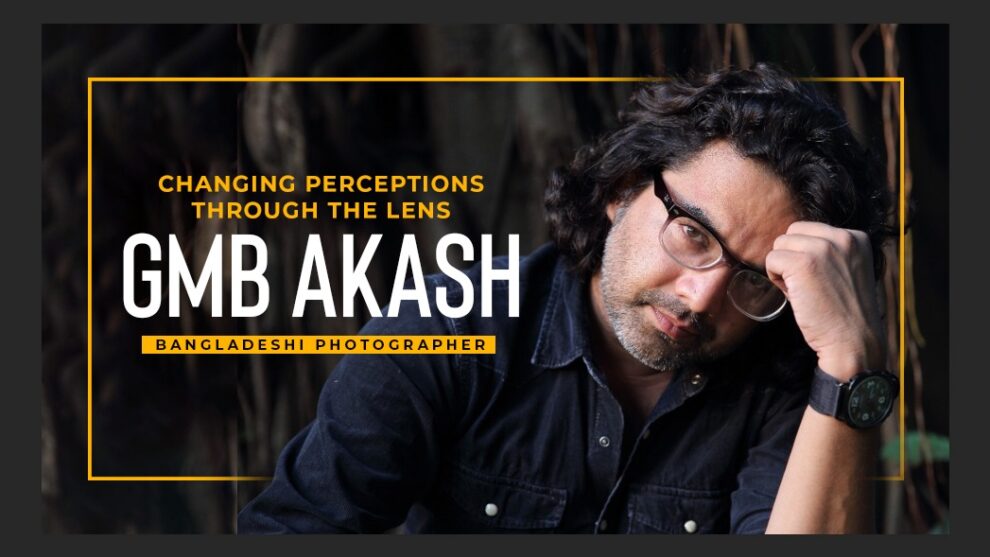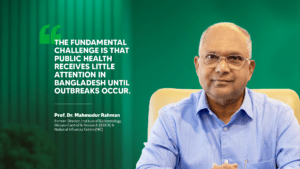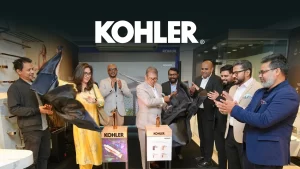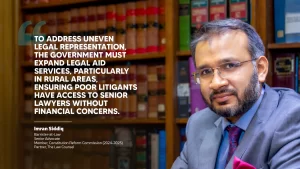Q. Please take our readers on a journey to your past.
I am a humanitarian photographer based in Dhaka, Bangladesh, but I also cover stories in other South Asian and South East Asian countries as well as an occasional assignment elsewhere such as in Greece covering the Syrian refugee crisis when so many were arriving by rubber rafts from Turkey.
For the last 24 years, I have been a professional photographer. Although I did graduate studies in photography later on, I more or less fell into photography while still deciding my future. I found an old camera at home, a Yashica fx3 that was my father’s and that camera changed my life completely. I learned how to operate that camera by myself with the help of the manual and started taking photos without knowing anything. I had no idea about photography or even that photography could be a profession. Knowing nothing, I started roaming around here and there taking photos.
I had always been fascinated with marginalised people’s lives and their stories. Human faces and unusual stories intrigued me very much and that camera became my passport to go to the places that I could never go to otherwise. Slowly my camera became my best friend and I profoundly started discovering meaning and purpose in my life. Photography became and still is, my mission. I want to change people’s lives through photography. I want to inspire them and to give them a voice when they have no voice.
With this mission in the forefront, I have received numerous photography awards during my career and my work has been featured in the most prestigious international publications. I have been invited to speak and present my work as well as to have solo exhibitions at many exclusive events around the world including Norway, Switzerland, Germany, Italy, Portugal, Qatar, Maldives, Laos, USA and Greece. I have also been selected to be a member of various juries during many international photography competitions. In addition, I have completed publication of two photography books, “First Light” and “Survivors”, a fundraising project to support the people who have appeared in the book. I’m also currently working on another photography book, “Heroes of Life”.
I always follow my heart’s map; I go to places where my heart takes me to. In short I am travel-holic. I save every single penny that I have after basic necessities for traveling. I am kind of a messy person. Not a big planner. I love traveling. There are places I go for hundreds of times but which never bore me. Every visit is a new discovery and invites new stories. I follow my map-less heart that takes me to the destination that is most desired at the time.
Q. Tell us about your growing interest on photography and if there is any prominent memory related to your very first shoot?
I was fascinated by people living on the edge of society because of their appearance, their life experiences and living conditions. Gradually I became absorbed in their daily lives for months on end, learning from their experiences. My desire to capture it all on film pushed me to go to places and to meet people I never would have encountered otherwise. Each visit gave me a deeper understanding of humanity.
One of my first photos was of a sex worker who had just gone through a forced abortion. She had to attend to a client the very day she came back from the hospital. When I visited her she asked me:
“Akash bhai, I will meet my child in heaven! Do you think he will be able to recognize me?”
That was more than 20 years ago; the day I started writing in my diary for the first time. I started to note down the stories of these poignant and philosophical souls and how so beautifully they could meet pain and suffering. Their stories and coarse lifestyles oftentimes kept me awake at night.
This sister in the brothel kept sweets for me but never wanted anything in return. The honest laughter of these women in the world’s saddest place inspired me to do a series of photographs and stories about the neglected yet caring lives of these souls.
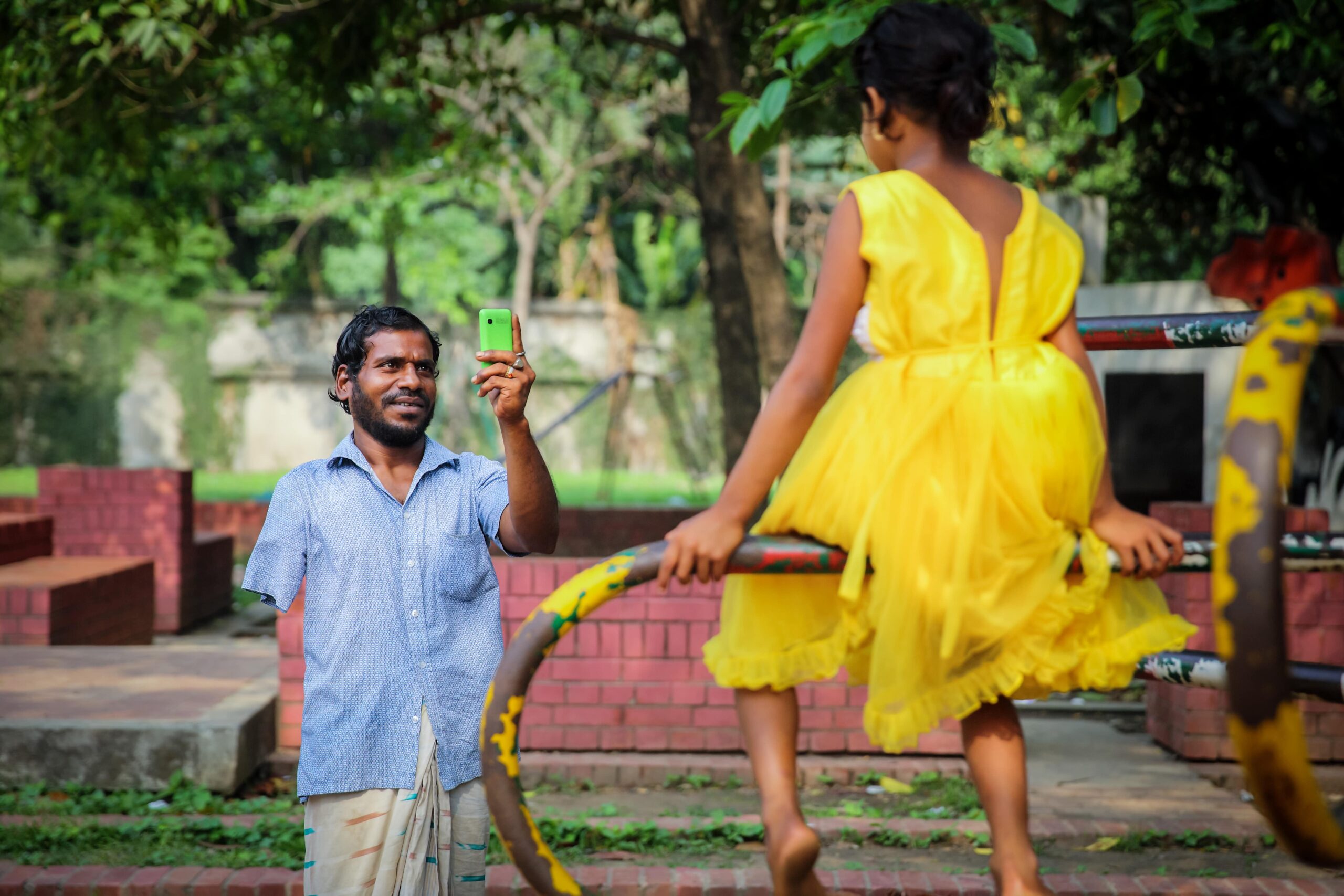
Q. What inspiration do you look for while capturing the moments and what motivated you to choose photography as a career?
Every person we meet in our lives has a story. Some have very inspiring stories and some have stories of loss. Every single person goes through so many different experiences in their lives. My childhood had a big impact on my life. The place where I grew up has had a big influence on my photography. Beside our home there was the biggest red-light area in Bangladesh. Almost Every night I used to listen to women who were shouting or crying. There was always fighting going on or loud music. I wanted to know more about the lives of those women who live inside those walls.
I used to visit my uncle’s house, where I saw a third gender person who used to work as a maid. My cousin brothers used to tease her all the time and make her dance sometimes almost naked. I wanted to know what her sin was that caused everybody to make fun of her.
I spent sleepless nights thinking about Dalit people who lived in the sweepers’ colony. Nobody used to let them come inside their home nor touch them because they were cleaners. I used to think about all these people and wanted to know more about them.
Since my camera had become my passport to get access to these people, I started mingling with them for months and months to know more about their lives. These people and their stories made me a better human being every day and I wanted to bring light on these issues. I wanted to let people know that our gender, sexual orientation, or profession does not define us. We are all human beings. No one becomes a sex worker and sells their body for pleasure; they do it for their family or for someone else who for that person’s own benefit, put them in Hell. The life of the Dalits lacks any choice of occupation as it is imposed upon them by society and cleaning the sewage of others is all that is available to them to do in order to survive.
I learned very quickly that we must respect each other and we must help each other for a better planet. Nothing is more beautiful than kindness and humanity in a good story.
Q. What is your process behind building up a story for each take? Would you please elaborate on the thought process and preparation of narrating the story?
For me, the relationship with people I photograph is very important. The people I photograph are never a mere subject for me to only use them and their photos for getting awards or fame. I build up a relationship before I take every single photo. I spend, sometimes months and months to build up a relationship with them before using my camera. And you will feel that relationship in the photos. I let them know who I am, why I am taking their photos and what I really want to do with the photos. I keep that relationship even after completing my project. I keep visiting them all through my life. I also try to help them in some way such as setting them up with small businesses or providing education for their children.
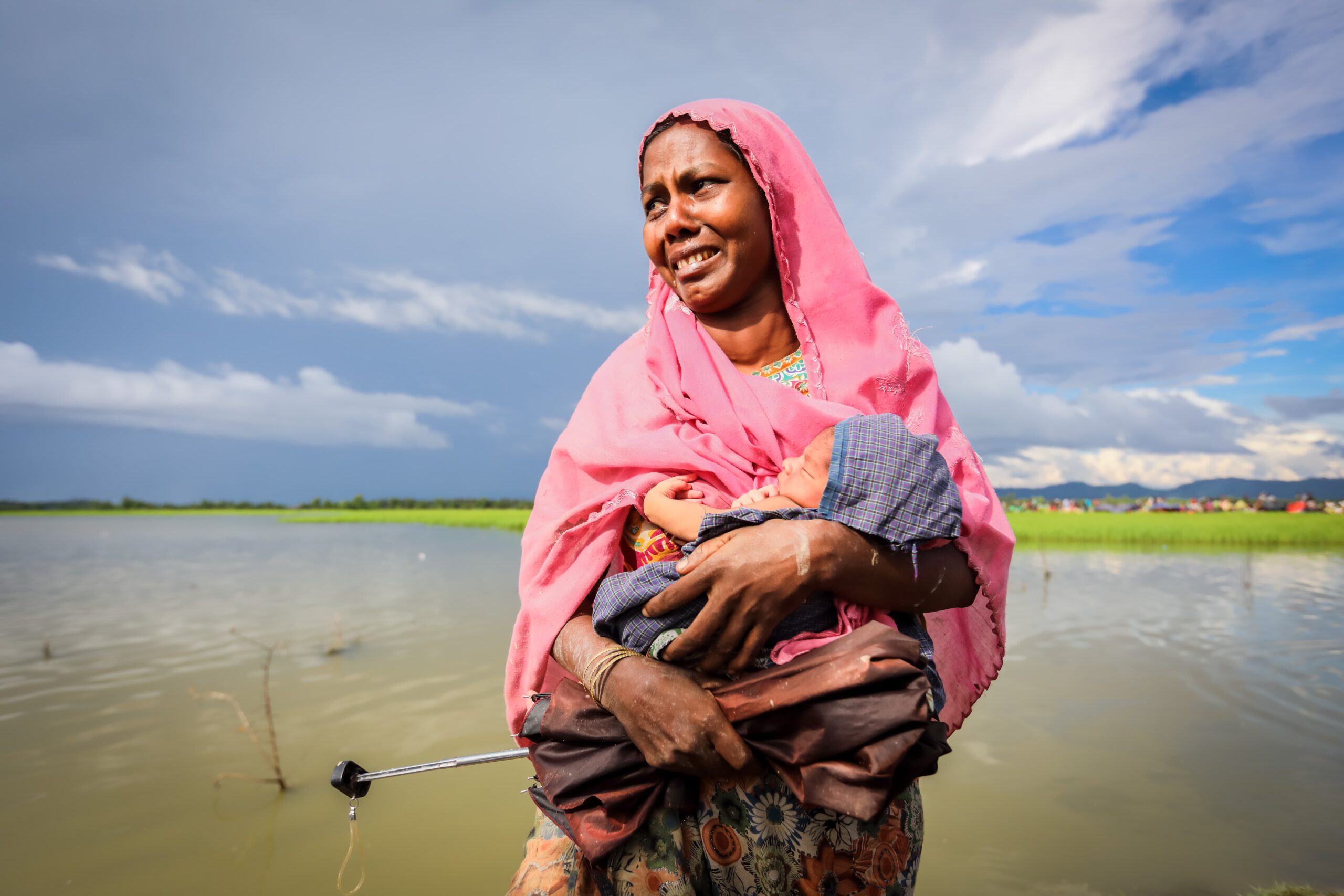
Q. How do you tackle the emotional baggage that remains with each of the stories?
I have always been interested in marginalised people. People who have no voice. People who work so hard every day and are only able to earn a basic living. People who cannot afford to send their children to school, have their children work beside them. These people are like heroes to me. They do everything only for their survival and they never give up. These people work for very little money under rich people making a lot of money. But they never complain. And I see that nobody really knows about these people; nobody knows about their struggles, suffering, turmoil, nor joy. I wanted to share those stories with the rest of the world.
Anybody who is facing injustice from our society is my subject. Anybody who inspires us is my subject. People who fight for their lives without complaining are my subjects. These people work for us; they are everywhere but we do not know anything about them. They also cannot share their stories or suffering on social networks like we do. I have always wanted to be a voice for them. Through my photography and stories that they tell me, I want to share their joy, suffering, and pain.
I am a very sensitive and emotional person. I cry every time people cry in front of me. It’s very difficult to keep myself separate from all this. I try to show what I experience with them; those stories are also stories of mine. My soul and eyes have bled hundreds of times while collecting those stories. For countless nights, I could not sleep afterwards. I could not even eat in a good restaurant when I think about all those children working in factories. All these people and their stories have taught me to live a simple and meaningful life.
Q. Any story that you consider as your particular favorite and why?
Photography is not an easy job at all. Photojournalism and documentary photography are especially difficult for many different reasons. Such is the case with my passion for photographing the marginal people of our societies. You have to be really strong mentally, physically, emotionally and spiritually.
I usually work on long term projects rather than single photo shoots. I select one topic and work on it for a long time; sometimes for over a year. Every project, without exception, has its own specific difficulties and challenges. Sometimes it’s very lonely and very hard to stick with one topic for a long time. Most of the places you need to travel to alone and wait day after day for the right moment or the right situation. And there are so many unexpected changes involved for each project that you are doing from the preparation to the finish. It can be lonely, risky, stressful mentally and physically and even life-threatening. Furthermore, there is always the possibility that you may not find the perfect moment for which you were hoping to take the photos or to engage with the people.
The most difficult type of work has been on my projects about the third gender and about sex workers. These topics were even more difficult in the beginning for me because of my lack of experience but it was never easy.
Firstly, it was so much work to get the permission from these people who had to deal with their own constraints. I have spent months and months meeting with them without my camera only to build up a relationship with these people who I photograph. It’s imperative that they can trust me and have faith in me in order to share their exceptional life stories. The people must get to know who I am and why I am doing the project as well as why that story is important to share with the world. It is only at this point that I can take out my camera which is far less threatening once the confidence in me is instilled and the people can relax and become themselves.
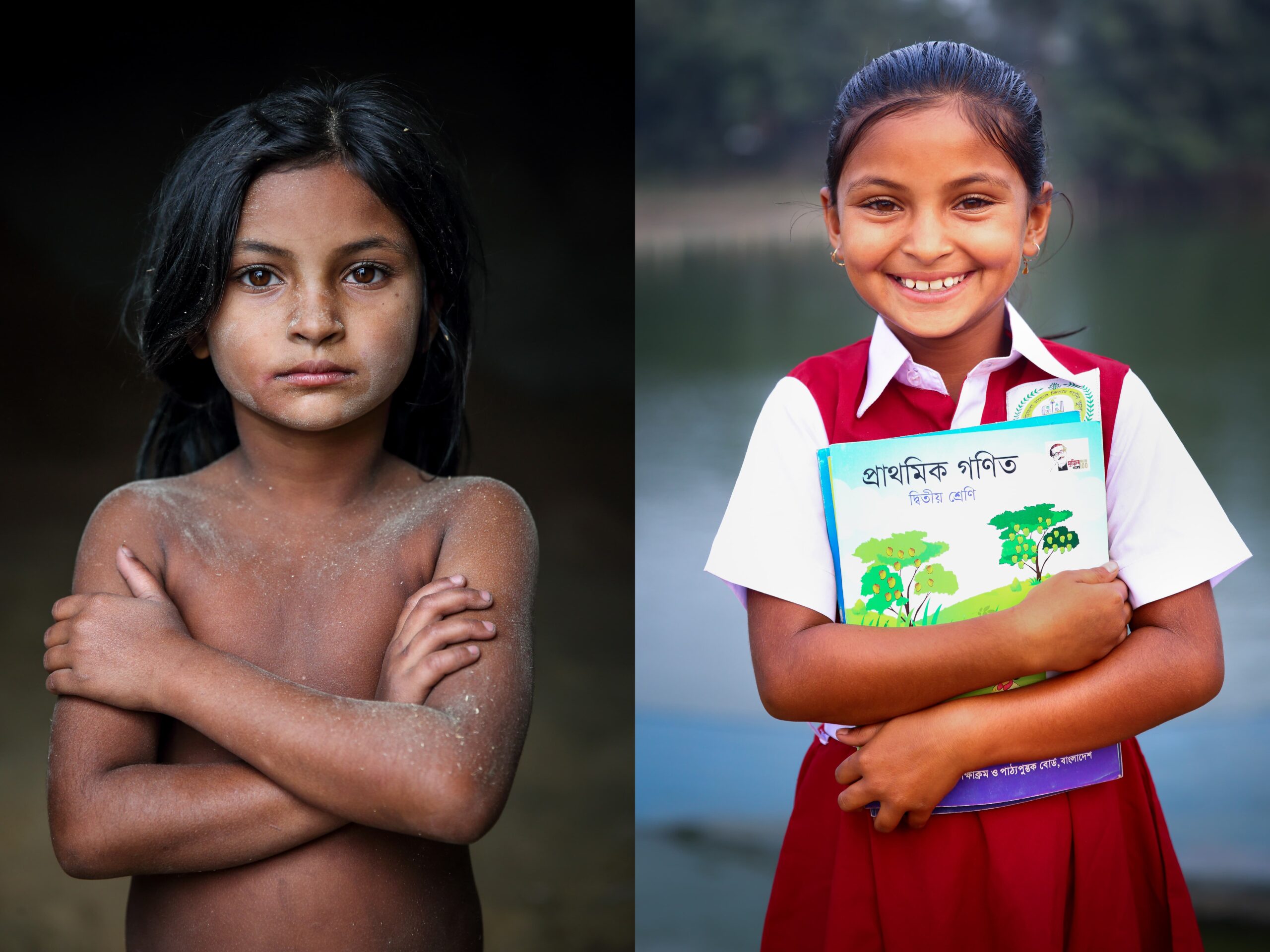
Q. Tell us about the challenging part of being a professional photographer in our country?
In the early days some of the challenges were overcoming the social stigma of the type of subjects I chose to photograph. Some people were not able to see the value nor the beauty of the marginal souls that I have photographed and that I have assisted in changing their lives in some ways for the better.
Still today, every day as a photographer is challenging because of the nature of the industry. It’s one of the most challenging professions and it’s very difficult to even survive these days. There are too many photographers now who are ready to work even for free or in exchange for the distribution of their photos only in order to get exposure. On the other hand, magazines and editors these days only give work to their known people. Most of the international magazines and newspapers send their own photographers from their countries or from their list of friends even though there are many very excellent local photographers in Bangladesh who also know the culture and the language of the foreign audiences as well as the local terrain.
But I see these days, it’s all mostly about the connections; it’s not about the quality. It does not seem to matter how good you are; only people who are connected to editors or influential people in the industry will get the job or exposure easily even if their photos are not the best. There are a lot of photographer groups also in Bangladesh who control the industry and if you do not belong to those groups, your whole journey will be more difficult. Corruption and nepotism make this entire industry more challenging and complicated.
I have always worked alone. I never had anybody to help me from this industry because I do not belong to any group. I just believe in my work and keep working. Still now, I work every day and every moment of the day. Photography and writing stories of the people I photograph, is a huge part of my life. I always use photography to help people and every day I want to reach more people through my work and to see some positive changes in society.
Q. How do you see the importance of recognition as a winner of several national and international awards and how much do you enjoy representing your country on a global platform, not only as a photographer but also as a speaker?
Recognition always works as great inspiration but appreciation from the people I help, is the most powerful motivation for me to continue to achieve. This enables me to improve the lives of more and more people in need. It pleases me when I can reach the people with my stories and images which open up a path to bring positive changes to the fate of unprivileged people.
When people tell me that I pierced their hearts with my photographs or that I moved them in some way, I may have inspired them to support changes in our society. It’s a positive moment when photos of the impoverished make viewers take a step towards assistance and help with social change.
I believe many of us are definitely indebted to those poor souls who are working for us in bad conditions in Bangladesh. One day we will all gather together against such crimes. Children will go to schools instead of factories; no more parents will sell their daughters to brothels. Yes, I am doing my part and I will do it until voices raise and hands come out. The important thing to me is that I am actively in a fight to change it. And already I am finding many people beside me in this cause. I am grateful that all my friends from all around the world always have enjoyed joining me in my humanitarian sphere.
Q. Tell us about your institution and what methods are you using to prepare the young students?
I founded The GMB Akash Institute of Photography, as a platform for education for unprivileged students who could never afford to have any form of education. I started offering affordable photography classes and workshops for hundreds of aspiring photography students. Later, I created a One to One photography workshop which is personalized for adult students coming from all around the world to Dhaka. The earnings from these photography classes and workshops go back into the school to support free education for young impoverished children and older students usually living in rural areas who have no resources to continue their education due to lack of funds or materials.
Five years ago, I set up a branch of GMB Akash Institute to educate unprivileged children under a tree with 30 young students. Then I built a school building and now I am building an extension for the students, as there are currently 160 poor children who get almost free education up to class 5. There are 10 teachers employed who receive monthly wages and training. The students come from eight different villages that have an entirely uneducated adult population working as day laborers and small craftspeople. These children will be the first generation to ever be educated in this region.
In addition, I personally oversee the education of 500 unprivileged children who are continuing their education through my offered scholarships. Establishing The GMB Akash Institute of Photography has led me to many other photography ideas and humanitarian projects which are still evolving.
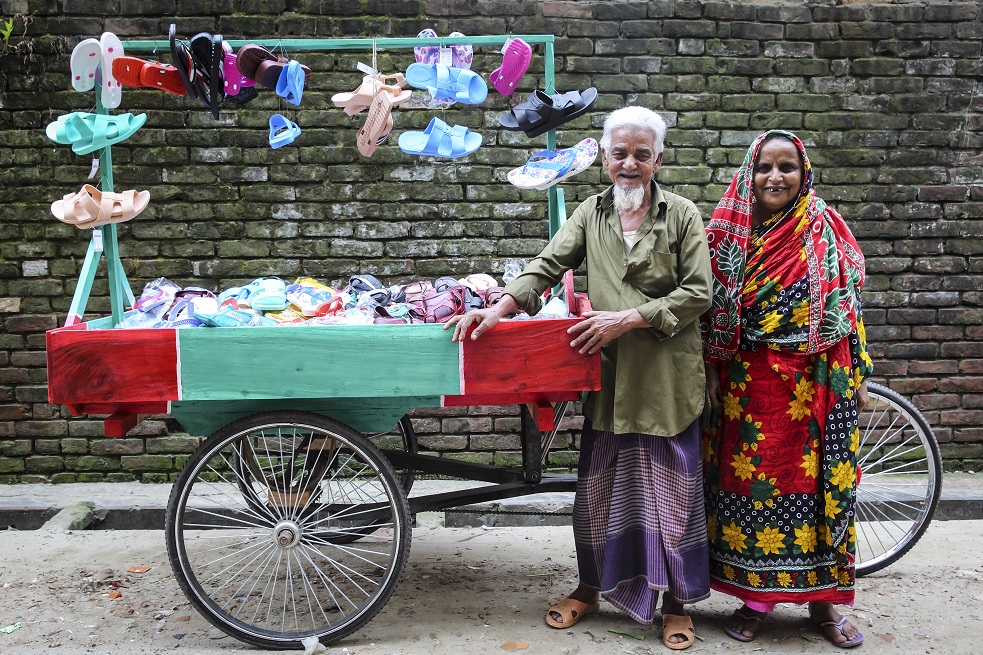
Q. Is there any accomplishment that you want to achieve in near future and what is your long-term goal through lenses?
Despite the awards, recognition, and interesting assignments, in the early years of my career, I was not completely happy with what I was doing. I could see that the people in my photos were in the same hopeless situation many years later. My mission and my goal were to change the lives of these people who I photographed. I wanted to give them something back from what I received. I was fervently trying to find a way for myself to help these beautiful people change their lives.
I came up with the idea that I would gift unprivileged people with small businesses so they could earn more money to meet their needs and to be able to send their children to school. The education of children is my main concern for the people of my country. In order to get children out of the factories and brickfields, I needed their parents to make enough money to support the family and have their children attend school. This also enables people to live with more dignity and to feel motivated to contribute to society.
For example, I have given cows with calves to many families. These families can sell the milk and earn money every day and they can also sell the calf after it has grown up. I have also gifted people with small businesses and taught them how to manage them and become self-sufficient. An example is arranging for and giving a family a vegetable stand in the market. The son and the father are able to work and satisfy their needs including the education of the son who had previously been working as a child day laborer.
I have set up similar business concepts for others. I find out what they would be able to do which would motivate them and satisfy their family needs. Then I’d set up the business including helping them build a structure, train them, monitor them, and offer consultation for them while they become self-sufficient.
A little more than a year ago, I bought three Tuk Tuk taxis and put in three needy drivers who could manage the operations and make a profit for their families. In addition, part of the business profits went to support three different elderly childless couples who couldn’t even buy their daily food. I am currently planning to help more people with different kinds of businesses. So far, I have set up and given 150 different businesses to 150 people or to the members of their families.
For a number of years, I also have been providing scholarships to hundreds of students every year which enables them to take their SSC and HSC Exams which they need to continue with their education. Many of them are studying now in recognized institutions like Notre Dame College in Dhaka and Dhaka University.
Elderly couples who have no children have to live on their own. They have no one to support them and no income even to buy their daily food nor other necessities. I look after 20 elderly couples and every week I buy and supply them with everything they need.
There are other types of charitable activities that I organize and support such as distributing new clothes amongst thousands of poor people every year. For example, I distribute winter clothes amongst the masses of needy people who are cold but who cannot buy anything.
I have also given thousands of pairs of sandals to street children, most of whom are walking in bare feet and cutting themselves. I feed hundreds of street children every month as well as distribute sanitary napkins among hundreds of girls who have no other access. Whenever I get any money, I try to help people. Helping people is my life mission and goal.
Many of you have always known that my mission with photography and my own life have been helping unprivileged people, creating awareness of their pain and inspiring people to do good for others. For the last 24 years I have dedicated my life to working with marginalized and poverty-stricken people in order to help them. Besides sharing their photos and their extraordinary stories, I am personally engaged in trying to help them in concrete and sustainable ways that will improve their lives and the lives of their children; all of which will improve our societies as a whole.
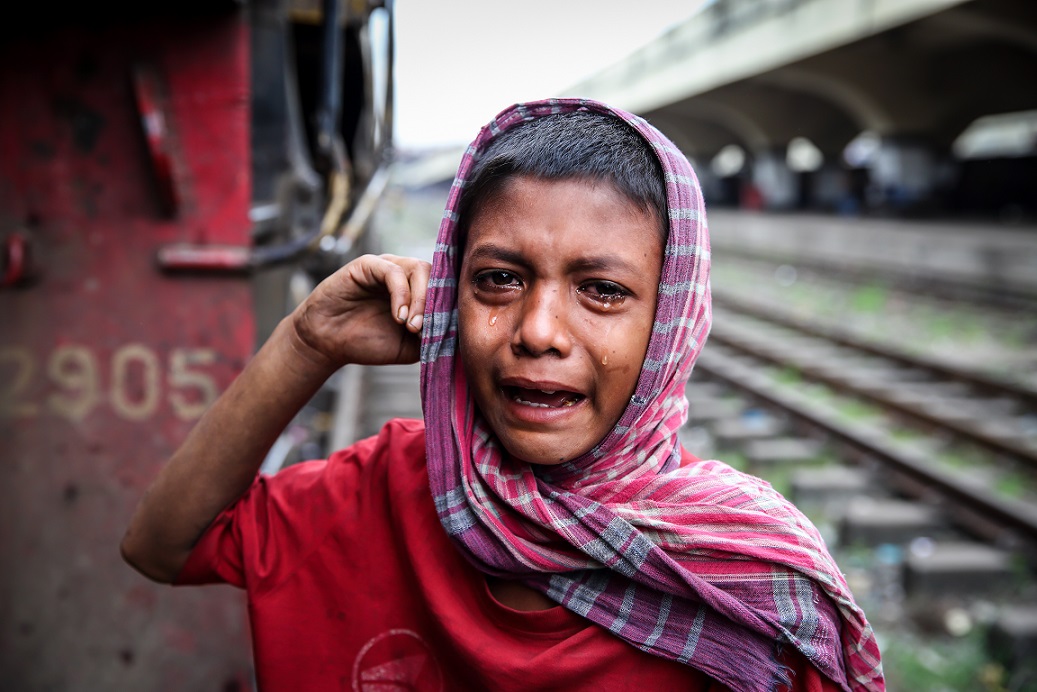
Q. Any final thought that you would like to share for the aspiring photographers?
Always ask yourself why you want to be a photographer. Every time you lift up your camera, ask yourself why you are taking that photo; those photos, any photos. How are they related but each one remains unique and connected to each other which expresses your overall vision of your art? What is it that you want to convey in your work? What is it that you are trying to achieve? For example, for myself, I always want to show at least one of two things through my work. The things that need to be changed positively or the things that need to be appreciated.
It is very important to know yourself and what your actual interest is in photography as a profession and a means to communicate your passions as an artist and as a human being. Beginning photographers should spend time learning about photographers whose work you admire and try to understand their methods, techniques and ways of thinking that lead them to achieve the work that is appreciated. You should apply the lessons that you learn from other photographers to your own photography goals and develop your own unique style and voice that will lead you to your own personal achievements.
Do not just use photography for getting ‘likes’ and attention on social media nor for getting photo awards and rewards for yourself only. If you want to be a professional or committed photographer, this will never bring you, any peace nor a sense of accomplishment. If you are a passionate photographer and a compassionate person, you will have a purpose for your art. Photography has the power to change the world into a better place for all living beings. It can change peoples’ perspectives and even their thoughts. Always be responsible with this power and focus on bringing positive changes that are needed, celebrating life and inspiring all people.
